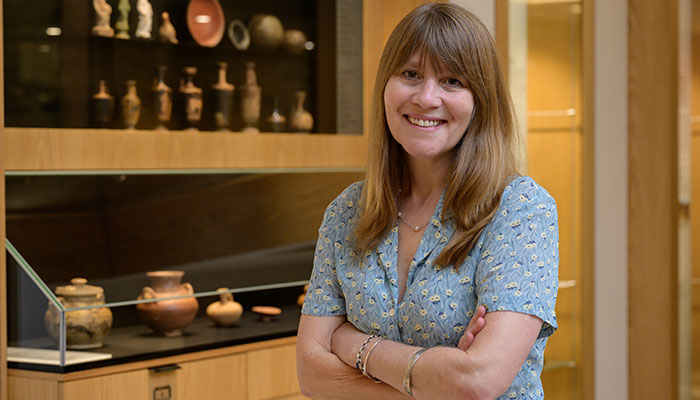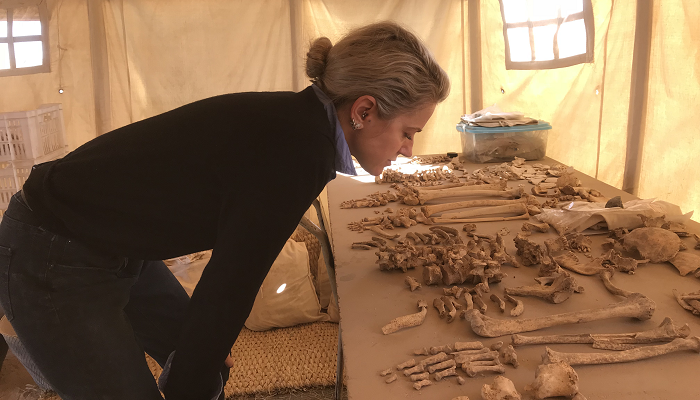With the COP26 UN climate summit over and UN Secretary General Antonio Guterres declaring we are "still knocking on the door of climate catastrophe", quiet activism may be more key than ever – although it does not replace the actions that government and industry can take to drive down emissions.

Fragile planet: United Nations Secretary General Antonio Guterres addresses the COP26 climate summit in Glasgow.
“It is not our only hope, but it is an important element of giving people hope, that there are things everyone can be doing in their everyday lives to help mitigate and adapt to climate change,” says Macquarie University Associate Professor Donna Houston, co-author of a new book Quiet Activism: Climate Action at the Local Scale.
“Our research found this was very important particularly in the absence of federal leadership on the issues, which is something that has been noted by a lot of people that we spoke to in the research.”
Quiet activism, Houston explains, refers to the extraordinary measures ordinary people take at the very local scale to combat climate change, and is complementary to government actions and more direct forms of climate protest.
We realised there were so many wonderful, creative and ingenious things people were doing, and so that was where we started to think about this concept of quiet activism.
And her research in four Australian regions – Sydney, Perth, Melbourne and South East Queensland – as part of an ARC Discovery Project revealed the extent to which quiet activism is all around us, at a time when surveys show Australians more than ever are seeking to make a difference.
From growing vegetables in community gardens and recycling waste water, to cycling to work and eating food with a low carbon footprint, individuals everywhere are doing small and everyday things to combat climate change.
Local governments, too, are proving their climate stripes, with strategies such as the Cool Streets tree-planting program in Sydney’s Blacktown and the Climate Emergency Plan formulated by Darebin Council in Victoria, all striving to shift the dial.
Ordinary people doing incredible things
“We did interviews and workshops and surveys with people, local governments, community organisations, NGOs, businesses and industries as well, to better understand what kinds of activities they were doing to address climate change at the local scale, and what the barriers and opportunities might be,” explains Houston, an urban and cultural geographer in the Department of Social Sciences at Macquarie University.

Going green: Community gardens are one of the many small and everday things people are doing to help fight climate change.
“This is where we realised there were so many wonderful, creative and ingenious things people were doing, and so that was where we started to think about this concept of quiet activism.
“There is an incredible amount of work being done by ordinary people to address climate change and there are many powerful stories about this [in the book] – we should learn from them!”
While quiet activism cannot solve the climate emergency by itself, Houston firmly believes it makes a real difference.
There are lots of ways in which people can become quiet activists, including talking to your friends and family about climate change.
“We are seeing it play out in the international sphere at the moment, what happens when governments step back from their climate commitments, or try to negotiate softer targets, or say one thing while doing another,” Houston says.
“I think that quiet activism represents work that has been continuously happening in the community all this time.
“A lot of capacity has been built around quiet activism, with all the community networks and the learning that has gone on there ….. and through that, people become more knowledgeable and educated about climate change, so it has been immensely important in that regard.”
So, you want to be a quiet activist?
Houston says that becoming a quiet activist can begin at the personal level, whether it’s making your household more sustainable through, say, installing solar panels, or choosing to eat less red meat.

We can: Quiet activism can make a difference - but it does not replace the actions that government and industry can take to drive down emissions.
“There is certainly a debate about the extent to which doing those things can address the bigger problem, but it’s certainly a start,” she says.
Local councils will often have advice on their websites about sustainability, as well as information about the many community initiatives that people can become involved in, such as local Landcare groups or community gardens.
“There are lots of ways in which people can become quiet activists, including talking to your friends and family about climate change,” Houston says.
She says the book, aimed largely at a community audience, presents a positive narrative at a time when the world is failing to escalate its climate ambitions to limit the rise in temperature to 1.5 degrees this century.
“The longer the delay, the worse the problem gets,” Houston says.
“It is important for people to feel empowered or feel like they can make a contribution individually, but also just connecting with other people who are worried, and be doing something in the community, is really positive as well.”
Associate Professor Donna Houston is an urban and cultural geographer in the Discipline of Geography and Planning at Macquarie University.
Quiet Activism: Climate Action at the Local Scale by Donna Houston, Wendy Steele, Jean Hillier, Diana MacCallum and Jason Byrne, is published by Palgrave Macmillan.



